Prickly problem
We’re sitting in a thistle patch in Orkney. Luckily they are relatively sparse. We have company:
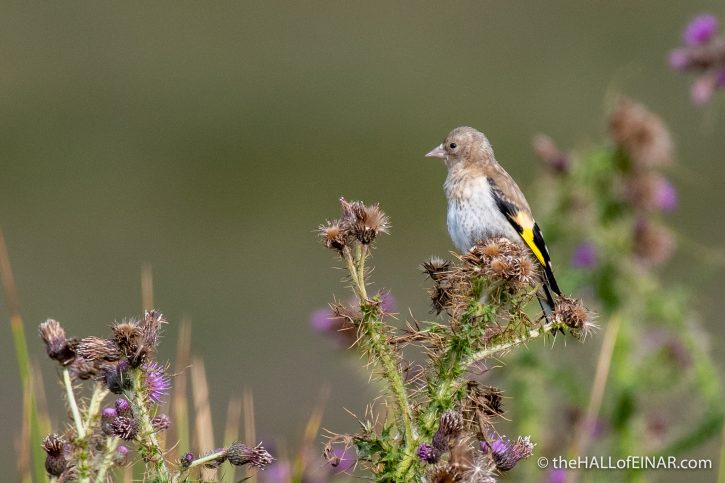
There’s a juvenile Goldfinch exploring the ripening thistle seeds:
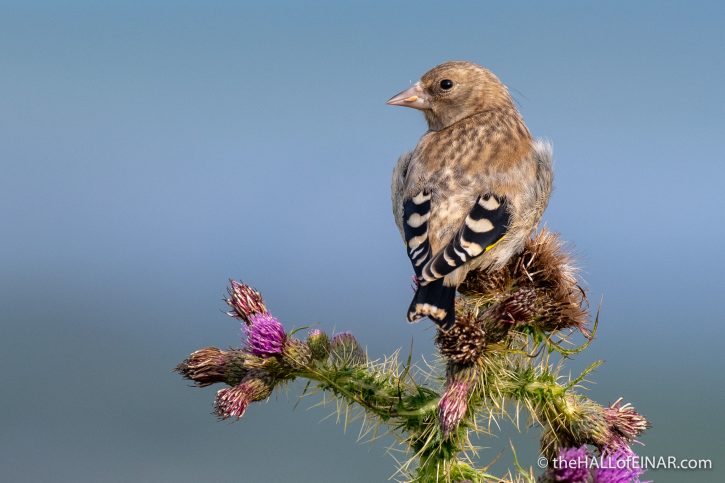
A noisy Twite is one one side of us:
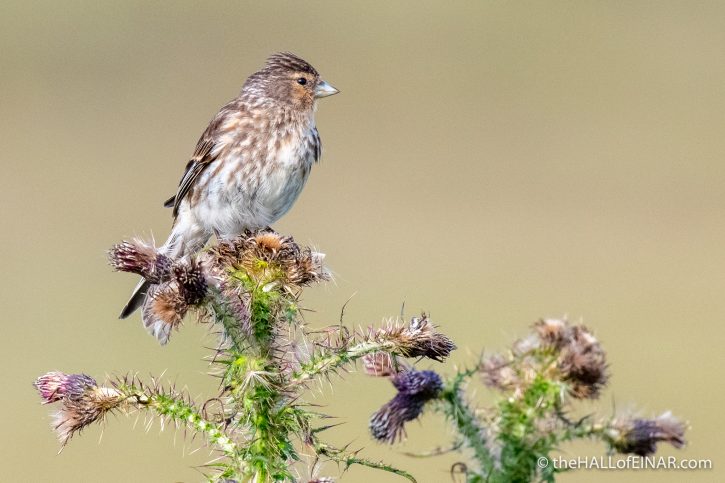
Thistle seeds are the star attraction for them as well:
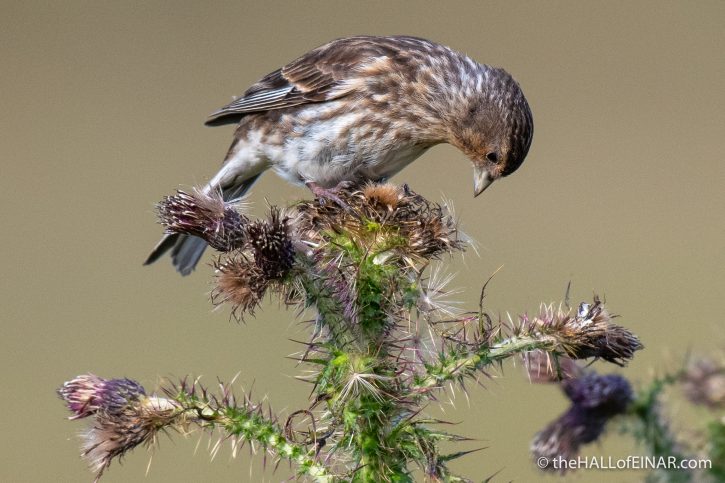
They are so beautifully camouflaged, until they make a noise, and then everyone can tell where they are.
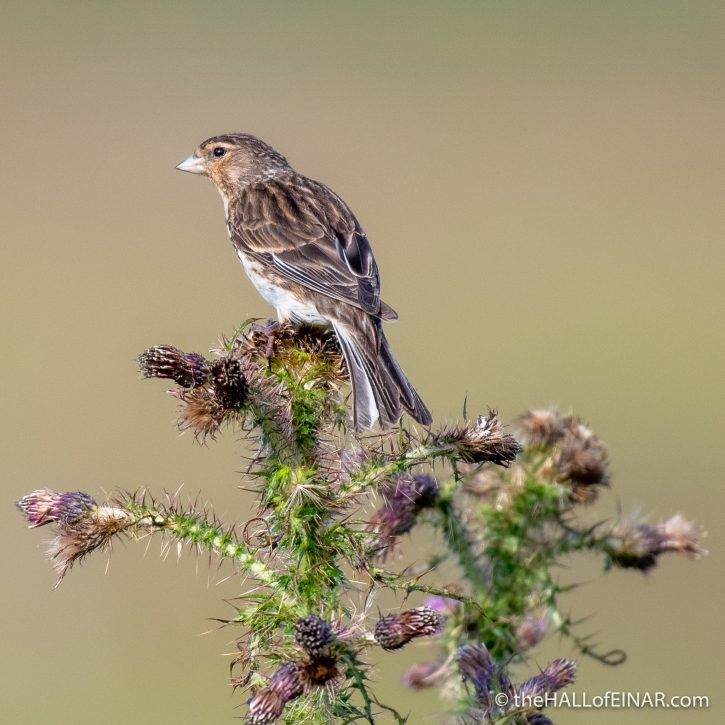
There’s also a male Linnet with glorious grey head, chestnut back and red-speckled front.
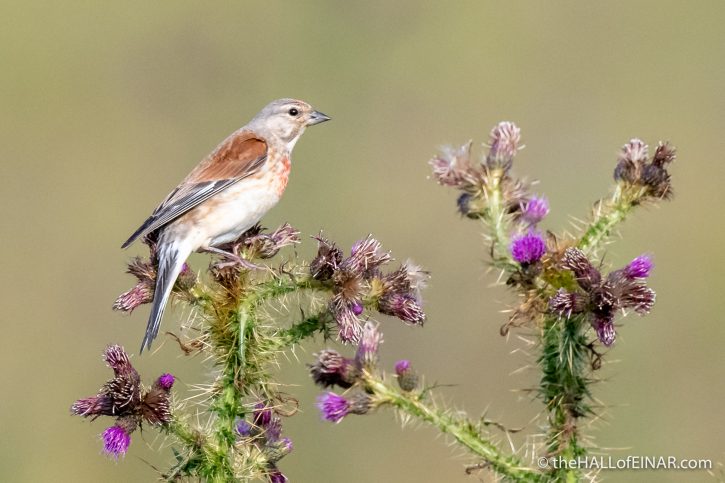
I know how thistles manage to survive having their leaves eaten, so they can get enough energy to flower and set seed. Yet how do they manage to reproduce when their seeds seem to have so few defences?
I suspect producing millions of seeds at the same time and producing the ultimate glut that no amount of birds could eat may be part of their answer. No matter how much they try, the birds will never manage to eat them all. It’s a little like me with Orkney Ice Cream.